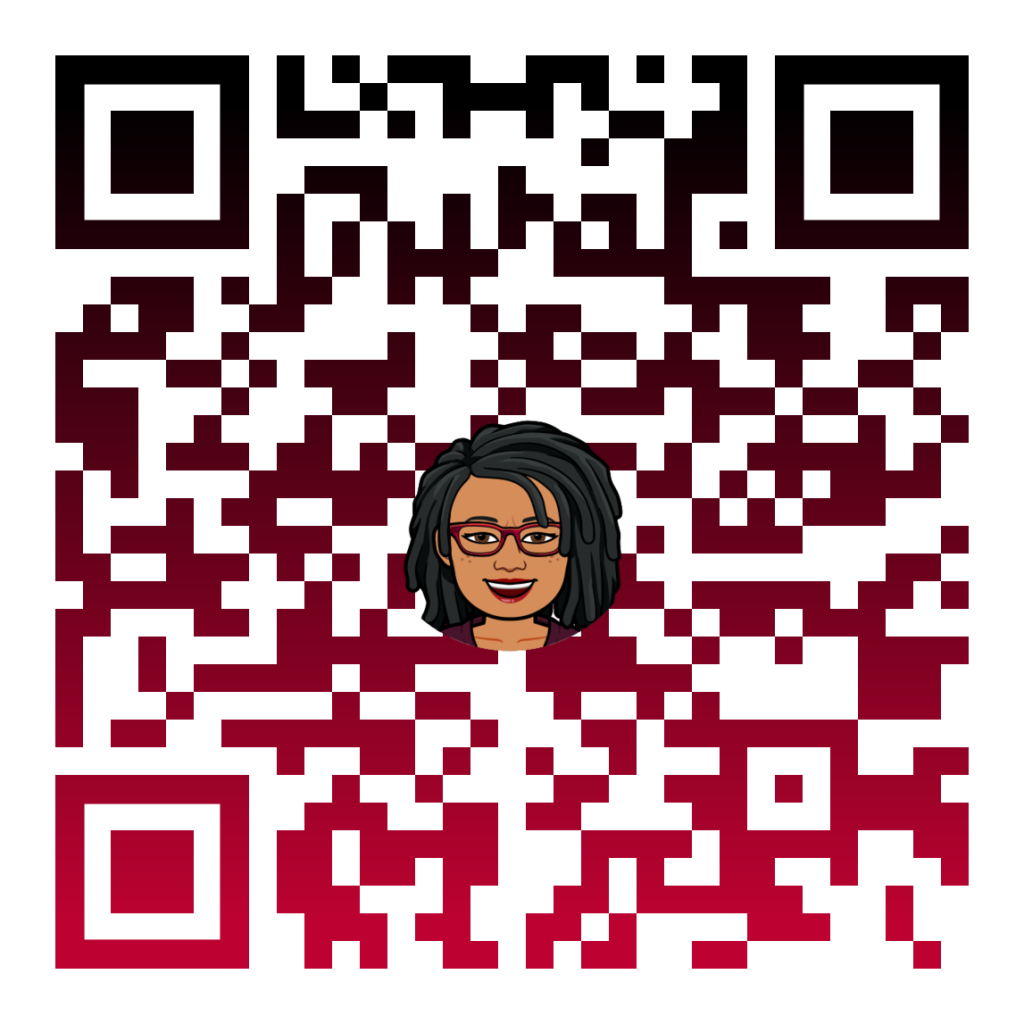QR Codes

I made the above QR code using QRCode Monkey. The site was ridiculously easy to use. I played around a bit and added my Bitmoji avatar as a logo and changed the background color from blue to red. The QR Code will take you to one of my favorite library sites-School Library Journal’s Teen Librarian Toolbox blog. I would like to make this QR Code available to students so that they can access the blog to find book reviews, find inspiration for maker space projects, and gather information on issues which are important to teens.
Virtual Field Trip
For my field trip, I decided to explore Iceland. I had planned to chaperone an actual school field trip to there earlier this summer, but my passport did not arrive in time. Since I am unlikely to have that opportunity again in the future, I wanted to see all of the places I missed. Students taking Earth Science would love to see how tectonic forces helped shape the island and how glaciation helped create Iceland’s fjords, waterfalls, and black sand seashores. They would also appreciate learning how the island’s geothermal activity not only provides the majority of its electricity, but also is responsible for the therapeutic properties of the Blue Lagoon.
Layered Reality
While I am old enough to remember when virtual reality was an emerging technology, advances in this field have made it grow exponentially, and our digital native students love the immersive experiences they enjoy using augmented and virtual reality devices and applications. I am lucky to teach at a school that has virtual reality headsets and a fantastic Information and Technology Resource teacher who provides training to staff and students on multiple devices and platforms. Unfortunately, this is not case for all schools, and librarians become a invaluable technology resource. For little to no cost, librarians can partner with teachers to use AR QR codes to make lessons engaging and immersive (AR Code, 2023). Furthermore, platforms such as Metaverse are free and allow students to use augmented reality in creative and collaborative ways. (Young, 2020). Finally, using AR and VR platforms which are compatible with hardware to which the students already have access, such as Chromebooks and Ipads, is a great way to leverage existing technology to explore immersive and engaging activities like virtual field using Google Arts & Culture. (Young, 2020).
References
AR Code. (2023, February 16). AR codes: How they work and applications in education. AR Code. https://ar-code.com/blog/augmented-reality-codes-in-education
Young, L. (2020, April 7). Get the most AR/VR technology without breaking the budget. School Library Journal. https://www.slj.com/story/get-the-most-from-ar-vr-technology-without-breaking-budget-library